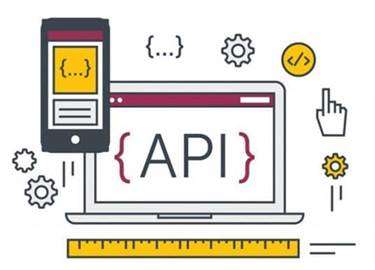Content
- A Mini Guide To Risk Management For Your Business
- Recommended Screen Time For Kids: Ensuring Digital Safety
- Innovative Smart Scheduling And Predictive Maintenance Techniques
- Automation, Control And Supervision Of Combined Heat And Power Systems
- Computer Aided Process Planning For Agile Manufacturing Environment
Although there are significant limitations, it proved to be possible to design systems improving the present situation in a wide range of application domains. It allows ISAC to maintain a spatially indexed map of relative sensory data in its environment. PM is a data structure that encapsulates both primitive and meta behaviors and forms a basis to learn new behaviors and tasks. CIM installation must start from the top with a commitment to provide the necessary time, money and other resources needed to make the changes that CIM requires. Unable to timely fulfill customers’ orders leads to loss of revenue, market share, and reliability. CIM also automates the storage of products and the distribution of products from the storehouses.
- With each division of the factory broken down in such a manner, it allows operators to make any necessary changes to the system without shutting down the whole system.
- What has changed is the availability of commercial software, experience in applying software applications to manufacturing, and the emergence of standards for applying software and computer technology to manufacturing.
- The term “computer-integrated manufacturing” refers to both a manufacturing method and the name of a computer-automated system that organizes a manufacturing enterprise’s engineering, production, marketing, and support functions.
- CAD, or computer aided design, has been able to aid the operators in the formulation and blueprints of more sophisticated products and technology.
- One of the most widely used techniques for decision making under uncertainty is two-stage stochastic programming.
This particular challenge ties the data entry people, the programmers, and the production operators together. The factory will need to assure that the individuals working with the system throughout the factory are competent and knowledgeable. These individuals will need to be well trained, and probably need to update their training periodically. Successful implementation of CIM means optimization of the entire process instead of individual production processes. Lack of understanding the technology and suitable infrastructures, contributes to managers failure to appreciate CIM. Presents enabling philosophies, tools, or technologies of agile manufacturing, along with their functions or objectives and the means of achieving them.
A Mini Guide To Risk Management For Your Business
The challenge is in acquiring competent individuals who can assure that all the data within the system is at its optimum operating integrity. For this purpose, the HTTP processes in the gateways may transfer data to the WWW servers and to the other SML level subsystems. In addition, it is being investigated if it is feasible to employ at SML some specialised expert systems, e.g. G2 , intended towards improvement of the working media production profitability. The computer-integrated Manufacturing pyramid of the 1980s has been crumbled to make way for a variety of better models for manufacturing information technology in the 2000s.
It’s also referred to as flexible design and manufacturing. Today, many well-developed tools are available that can be successfully applied to meet the functional needs of manufacturing processes. Experience gained applying software and computers to manufacturing has been well documented, and international standards communicate generally accepted best practices in manufacturing systems integration. Manufacturers today can take advantage of experience gained from early adopter’s efforts and apply current technology with a high degree of confidence that the application will successfully meet requirements.
Somewhere in the 1980s, the industrial automation community initiated the development of computer-integrated manufacturing systems. These were systems of systems aiming to integrate automated workstations into fully automated factories. In fact, this community was designing and developing systems of systems before it became a popular topic in systems engineering. Unfortunately for industrial automation, the results were underwhelming. The existing structure of the organization must be altered to facilitate cooperation between manufacturing, accounting, marketing, engineering, and information systems department. Improved product development cycles, high levels of human and capital resource productivity, improved quality, and short delivery time, lead CIM users to a rapid response to the market place.
Subsequently, based on these decisions and the realization of the random events the second stage decisions are made subject to the constraints of the recourse problem. Production decisions, because of their significant lead times, may be contemplated in a here and now decisions scenario. Otherwise, supply-chain decisions can be postponed on the basis of the production decisions and the realization of the demand .
Computer-integrated manufacturing is a manufacturing method that employs computers to control the entire manufacturing process. Individual processes can exchange information and initiate actions thanks to this integration. Although computer-integration can make manufacturing faster and less error-prone, the main benefit is the creation of automated manufacturing processes. CIM typically employs closed-loop control processes based on real-time sensor input.
CIM requires a new management perspective and careful planning of each technical element in conjunction with training. It provides information by linking each operation task by computer, giving decision makers access to needed information. Real CIM potential lies in creating a network of people and activities to accelerate decision making, minimize waste, and speed up response to customers while producing a high quality product. CIM must be thought of as a strategic policy within a company. It can be costly, and can require changes in policies that may be difficult for those accustomed to the old methods to accept. The automotive, aviation, space, and shipbuilding industries use computer-integrated manufacturing.

CIM includes several computer-based technologies, such as CAD and CAM. The full form of these technologies is computer-aided design and computer-aided manufacturing. Other than CAD and CAM, CIM involves many more technologies, such as robotics, computer-aided engineering, EMS , and more.
Recommended Screen Time For Kids: Ensuring Digital Safety
It then walks the material through the factory and the production process. One of the most widely used techniques for decision making under uncertainty is two-stage stochastic programming. In this technique, the decision variables are grouped in to two sets. The first-stage variables correspond to those decisions that need to be made prior to resolution of uncertainty (“here and now” decisions).

Please note that automation at every stage is a keyword to save time, cost, and effort. One of the keys to success in the manufacturing business is to lessen errors and to enhance productivity. The more one can produce with fewer flaws, the more one can make at the bottom line. Over a period of time factory owners have integrated computer systems in order to streamline the production process. CAD, or computer aided design, has been able to aid the operators in the formulation and blueprints of more sophisticated products and technology. Information handling is the way to reduce manufacturing time.
Innovative Smart Scheduling And Predictive Maintenance Techniques
Assist the management in collecting relevant data to optimize efficiency. Maintenance tasks may also be introduced to compensate the use of facilities with low reliability indexes.

This means that the whole factory works together, not as separate parts. As a unified unit, it operates for the peak benefit of the whole factory. The third, https://globalcloudteam.com/ and final challenge that has been encountered in the use of the CIM system is process control. This entails assuring that the whole process runs smoothly.
Automation, Control And Supervision Of Combined Heat And Power Systems
Companies nowadays depend heavily on computer-integrated manufacturing. Over the years, many of its initial issues have been resolved, and those technological advances are now incorporated. Firms use the CIM in almost every department, be it engineering, mechanical or electronic design. Such an approach helps a company to boost efficiency and productivity, as well as reduce errors. It eventually assists the company in lowering its cost of production and quality and ensuring timely deliveries.

To automate and speed up the production, the CIM uses sensors, closed-loop control processes, and more techniques. All these technologies help minimize errors in manufacturing, lower dependence on manual labor and automate repetitive tasks. Companies in automotive, aviation, and space rely heavily on CIM. Since the 1980’s CAD and CAM have worked together to move from the idea phase to the application phase. The factory sector has slowly been phasing in Computer Integrated Manufacturing, or CIM over the years.
This integration will allow for the digital information and computer control of the production process to be intertwined throughout and within the factory. While the CIM system is the optimal choice to aid in the manufacturing process, it does come with a unique set of challenges. The greatest challenge is to get all the different machines within the factory to work on the same system. In the typical factory, there are a variety of machines that perform different tasks, that are made by a variety of suppliers.
Computer Aided Process Planning For Agile Manufacturing Environment
The use of computers for automation started after the 1970s. To support the design a language covering the range from high level, incompletely specified early development phases to low level, detailed description of software, has to be provided. A central goal to DOCASE is to include modelling of application dynamics and animation of the model into such a language. The seamless path from early to late phases and the ease of maintenance make this approach very attractive. The CIM system fractions every individual “center” of the factory into work cells.
Can be considered as an advanced business philosophy that unifies a company’s administration, engineering and manufacturing. The information technology plays a central role for planning and controlling the manufacturing process. It uses computers and communication networks to transform automated manufacturing systems into interconnected systems that cooperate across all organizational functions.
For this, the CIM analyzes the cost, production methods, quantity, processes, and storage. Company’s efficiency increases through work simplification and automation, better production schedules planning and better balancing of production workload to production capacity. The company may not deliver products in time, resulting in customer dissatisfaction and damage to its reputation. In modern times, telephone switching systems perform various functions, such as storing telephone numbers, monitoring the telephone lines, sending electrical signals, and more. One earliest example of automation is telephone switching. These switching machines made their debut towards around the 19th-century end.
Computer Aided Manufacturing Cam
To properly implement computer-integrated manufacturing, a company needs a qualified and skilled staff and manager. Algorithms that process data are also part of the CIM approach. These sensors analyze the current state and then work accordingly to take corrective action if there is a need.
This will allow operators to alter and enhance programs in order to improve products. The CIM system will also provide the necessary algorithms to bring all the data together. The data will then be able to intermingle with the sensor and modification components of the system. As for batch processes, the production schedule has to satisfy the production requirements under certain constraints, and, optimising an objective function usually based on the expected plant profitability. Preventive maintenance increases the plant reliability and, as a consequence, the production robustness. Therefore, batch processes require simultaneous maintenance and production scheduling activity.
